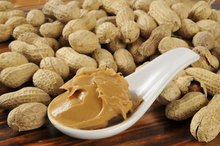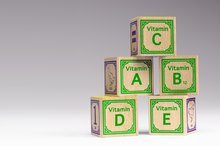A gluten- and dairy-free or gluten- and casein-free diet is sometimes used to improve the symptoms of autism spectrum disorders. Scientific studies have not backed up the benefits of this diet, but some parents report improvements in their children by eliminating these foods. You may also opt for a gluten-free and dairy-free diet for children with allergies or food intolerances.
Function of Gluten and Dairy Free Diet
Gluten- and dairy-free diets may improve behavior and physical health in some children, according to GFCFDiet.com. Advocates claim that some children, particularly those on the autism spectrum, react poorly to foods containing gluten or the protein in dairy, casein. You may also opt for a gluten- and dairy-free diet for a child with bowel issues or allergies. If your child suffers from celiac disease and does not tolerate dairy foods or is allergic to them, the guidelines for a gluten- and dairy-free diet may be helpful 1.
- Gluten- and dairy-free diets may improve behavior and physical health in some children, according to GFCFDiet.com.
- You may also opt for a gluten- and dairy-free diet for a child with bowel issues or allergies.
Gluten and Dairy Free Foods
Inattentive ADD Diet
Learn More
While a gluten- and dairy-free diet for kids does eliminate many common foods, your children can still enjoy all types of meat, fruits and vegetables. Acceptable grains, assuming there are no other allergies, include rice, corn and quinoa. You can replace dairy products with alternatives made of rice, nuts, soy or coconut, recommends GFCFDiet.com. With some experimentation, you can find foods that your child will like and enjoy that fit the diet.
- While a gluten- and dairy-free diet for kids does eliminate many common foods, your children can still enjoy all types of meat, fruits and vegetables.
Consider Special Needs
You should understand your child's needs and sensitivities. Some children may be only mildly intolerant to gluten or dairy, allowing you to keep it in the house with minimal precautions or to use products produced in the same facility as wheat or dairy items. More sensitive children, and particularly those with celiac disease, may require that you avoid even the smallest traces of gluten, according to Celiac.com 12.
- You should understand your child's needs and sensitivities.
- Some children may be only mildly intolerant to gluten or dairy, allowing you to keep it in the house with minimal precautions or to use products produced in the same facility as wheat or dairy items.
Benefits of Going Gluten and Dairy Free
Gluten-Free Diet for Kids With Developmental Delays
Learn More
Children with autism may show improved eye contact, reduced symptoms and improved digestive health on a gluten- and dairy-free diet, according to AutismWeb.com 3. Dietary intervention can benefit some children, but not all, with autism. Children with celiac disease require a gluten-free diet for general health and well-being, and kids with food allergies and intolerances will experience healthier digestion and fewer allergic responses on an appropriate diet.
See Your Pediatrician Before Changing Your Diet
A gluten- and dairy-free diet eliminates many foods and can lead to a very limited diet, particularly for children with autism or sensory issues. Without milk and dairy you must make sure your child is getting enough calcium and vitamin D from other foods, such as leafy greens, strawberries and broccoli. For vitamin D, sunshine and a gluten-free vitamin supplement may be helpful, according to GFCFDiet.com. You should consult your child's pediatrician for information and support before making a major dietary change. If your child is dealing with any other medical conditions he may have specific nutritional needs that require additional care. Ask your pediatrician if a gluten- and dairy-free diet should be undertaken.
- A gluten- and dairy-free diet eliminates many foods and can lead to a very limited diet, particularly for children with autism or sensory issues.
- Without milk and dairy you must make sure your child is getting enough calcium and vitamin D from other foods, such as leafy greens, strawberries and broccoli.
Related Articles
References
- Celiac.com: Unsafe Foods
- Celiac.com: Testing and Treatment
- AutismWeb: Diet
- Caio G, Volta U, Sapone A, et al. Celiac disease: A comprehensive current review. BMC Med. 2019;17(1):142. doi:10.1186/s12916-019-1380-z
- Gambelli L. Milk and its sugar-lactose: A picture of evaluation methodologies. Beverages. 2017;3(35). doi:10.3390/beverages3030035
- Knol EF, de Jong NW, Ulfman LH, Tiemessen MM. Management of cow's milk allergy from an immunological perspective: What are the options?. Nutrients. 2019;11(11):2734. doi:10.3390/nu11112734
- Piwowarczyk A, Horvath A, Łukasik J, Pisula E, Szajewska H. Gluten- and casein-free diet and autism spectrum disorders in children: A systematic review. Eur J Nutr. 2018;57(2):433-440. doi:10.1007/s00394-017-1483-2
Writer Bio
With a master's degree in art history from the University of Missouri-Columbia, Michelle Powell-Smith has been writing professionally for more than a decade. An avid knitter and mother of four, she has written extensively on a wide variety of subjects, including education, test preparation, parenting, crafts and fashion.









